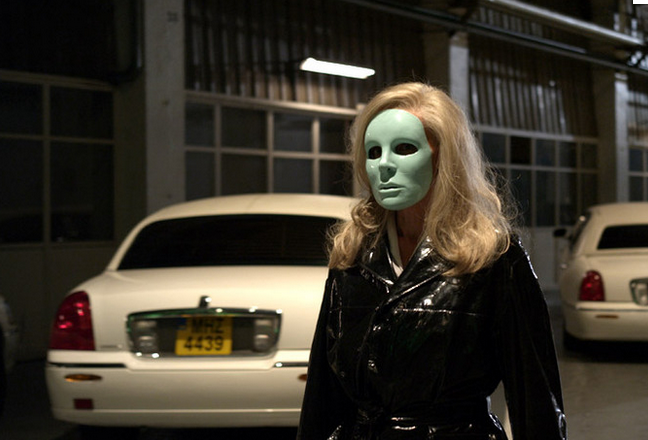Internet etymology tells me that the word “limousine,” which we take to mean those long, low rides of questionable taste (slightly different, I would argue, from the “stretch”), actually refers to a cloak-and-hood traditionally worn in the “Limousin” section of France. Apocryphal? Perhaps, but the shape of an early covered carriage that separated the driver from his ride supposedly looked like the hooded women of central France circa 1905.
Which brings me to the topic: the limousine as a creative device. Lynch knows it, of course. But now both Leo Carax and David Cronenberg have joined us for a slow-mo cocktail ride along a Manhattan cross street in the 50s or along the Seine. Lynch leaves the vehicles alone for the most part, but Carax and Cronenberg make them a centerpiece and a plot device. Limousines literally keep the story moving in both Holy Motors and Cosmopolis, which makes them similar films in a mechanical sense, though not exactly thematically. But beyond just a crank-arm to move the plot, or a shortcut to express superficial luxury, it’s really the aesthetics of filming inside a limousine that work. The framing of the shots and the distance from the camera to a man or woman sprawled on the back seat are remarkable, endurable and beautiful. For this reason alone, we will probably continue to see films that use limousines as a base-line for a plot. Limousines are cinematic.
